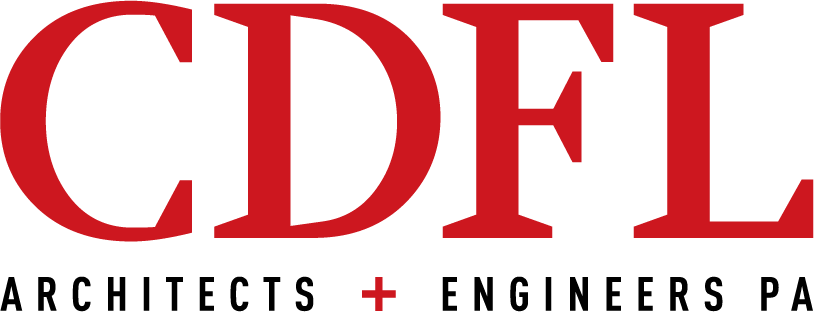Interior Design: Military Projects
The blog post was written by CDFL interior designer Lori Willis.
The innovation process needed to design spaces in the defense industry is more similar to the process used to create private sector spaces than you might expect. Success comes from matching unmet customer needs with technologically and commercially feasible solutions. Government and Department of Defense office design share many traits of commercial projects but with added criteria imposed by security, survivability, and other military standards. Our approach to government facility design addresses these additional criteria, as well as integrating other functional and aesthetic solutions into a single, successful package.
For military projects, the logistical challenges make independent operation, reusability, durability and reliability a necessity. Lifecycle also plays an important role in government sector specification; for instance, government facilities are somewhat notorious for leaving flooring in place much longer than their recommended life expectancy and typically, “uglying out” isn’t enough to warrant replacement. A floor must truly wear out so designers seek to specify products that maintain their appearance throughout their useful life.
One interesting contrast in government sector design versus private sector design is creating a space that looks lavish or extravagant. In current economic conditions, conspicuous consumption is frowned upon, so expensive and highly decorative spaces aren’t what we design. There is, however, a sense that government buildings should feel somewhat formal and stately which also has to be taken into account. Designers must must blend both concepts and create a quality design with staying power that reflects the gravity of the institution. Smart, simple solutions are key.
Another area of concern is budget. With tight budgets and financial watchdogs reviewing receipts, it’s imperative that a designer explain their choice of product and how it will provide the best value for the institution. Educating the client about the importance of lifecycle and the return on investment a certain product may offer is one of the most important jobs a government sector designer has.
The design of a government building provides a tangible expression of an organization’s policies, values, and goals. Our work supports the critical missions of our military and I always look forward to serving those who serve us!
For more information about our military portfolio, check out the case studies on Fort Campbell, Fort Knox, Fort Benning, and Fort Jackson.

